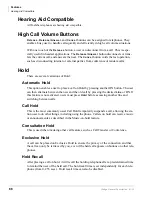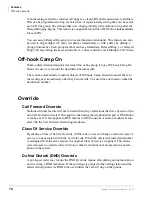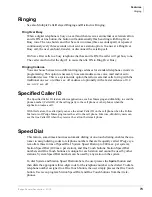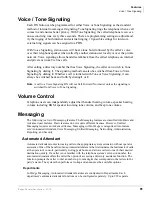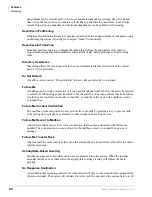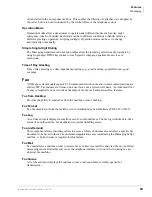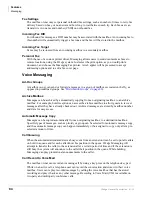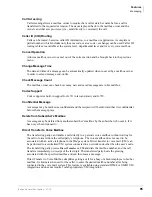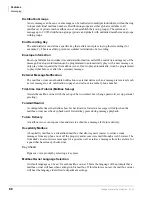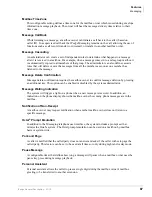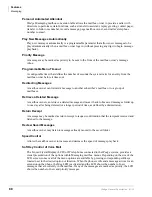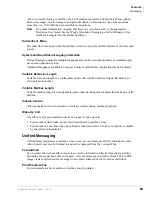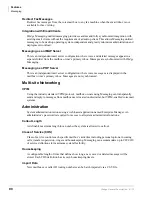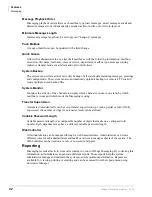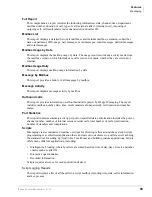
Features
Uniform Call Distribution
IPedge General Description 01/12
79
the call, the transferring party can use the switch hook or feature button to include the
original party in the conversation. At this point, the transferring party can hang up and the
other two parties remain connected.
Transfer (Unscreened)
Unscreened Transfer allows the transferring party to exit the connection before the trans-
fer destination answers. After the destination answers the call, the system treats it as a reg-
ular call. If the destination does not answer the call within the predetermined time of
period, the transferring party is recalled.
Transfer Direct To Voice Mailbox
The transferring party can transfer a call directly to a person’s voice mailbox without wait-
ing for the call to forward from the called party’s telephone. The voice mailbox does not
need to be associated with an active telephone in the IP
edge
system. Direct transfer to
voice mail (VM) can be performed to a centralized VM system connected to a network
node other than the user’s node.
The transferring party presses
Direct Transfer to VM
and dials the mailbox number, and
the call transfers immediately on receipt of the last digit. The transferred party hears the
greeting associated with the specified mailbox and can then leave a message.
Direct Transfer to Voice Mailbox simplifies getting a call for a busy or absent employee to
his/her mailbox. It eliminates the need for the caller to enter the desired mailbox number
after being connected to the voice mail system. This feature is available using standard
SMDI VM integration and does not require Toshiba proprietary VM integration.
Music or Ringing Option
This feature enables ringing or music to be heard by the caller when their call is trans-
ferred, depending on system programming.
Uniform Call Distribution
The IP
edge
system has a built-in Uniform Call Distribution (UCD) functionality, which
provides call flow to distribute calls more efficiently through a call center. UCD enables
calls to be answered by the auto attendant, which prompts the caller to dial the correct
UCD group number or, calls can ring directly to UCD groups. The call is then sent to the
UCD agent or queue if all agents are busy or logged out, but never to a busy number.
Incoming calls can also be directed directly to UCD groups without the use of an Auto-
attendant.
Calls sent to agents are managed by distributed hunt to find the next available agent. Call-
ers in queue can receive music and announcements imbedded in one of the systems music-
on-hold sources, and each UCD group can share or have a separate music source. The
announcements must be recorded on the music source. Overflow timing is controlled by a
unique overflow timer for each UCD group. Agent log-in and log-out buttons make it easy
for agents to sign in and out of the system so that calls can be routed appropriately.
Содержание ID EDGE
Страница 1: ...TOSHIBA Telecommunication Systems Division January 2012 General Description Title Page ...
Страница 6: ...This page is intentionally left blank ...
Страница 12: ...This page is intentionally left blank ...
Страница 24: ...This page is intentionally left blank ...
Страница 128: ...This page is intentionally left blank ...
Страница 134: ...This page is intentionally left blank ...
Страница 142: ...This is the last page of the document ...


